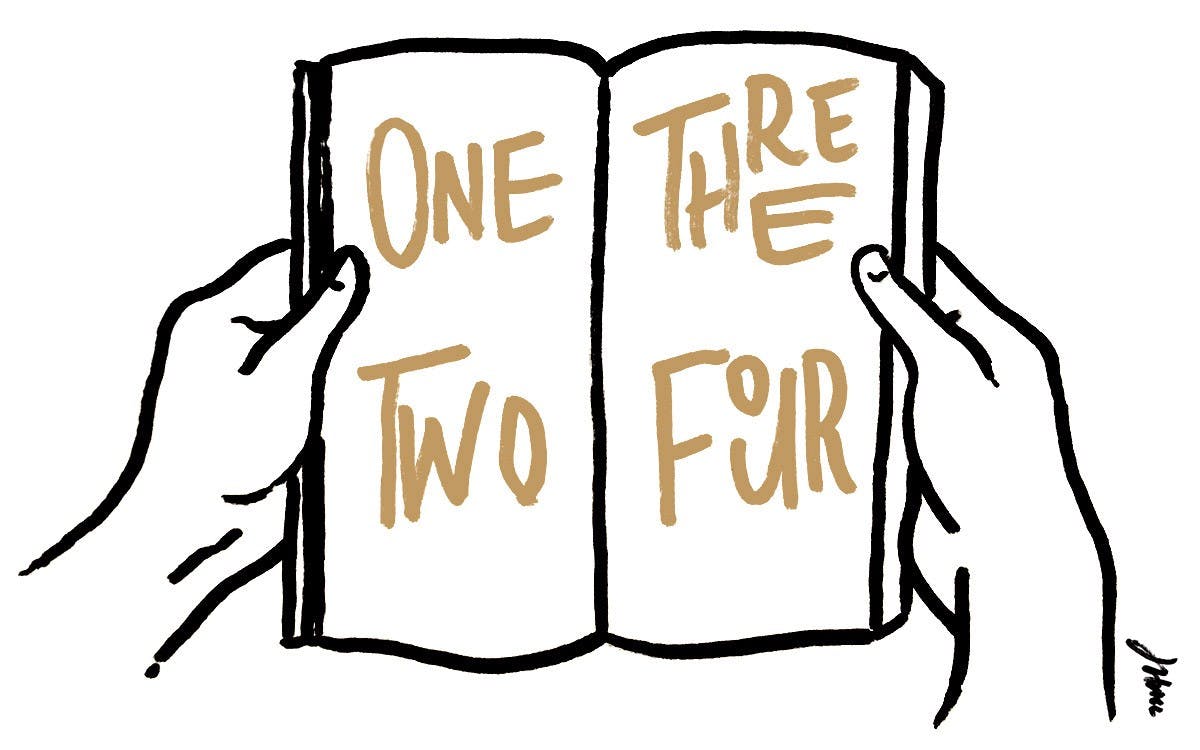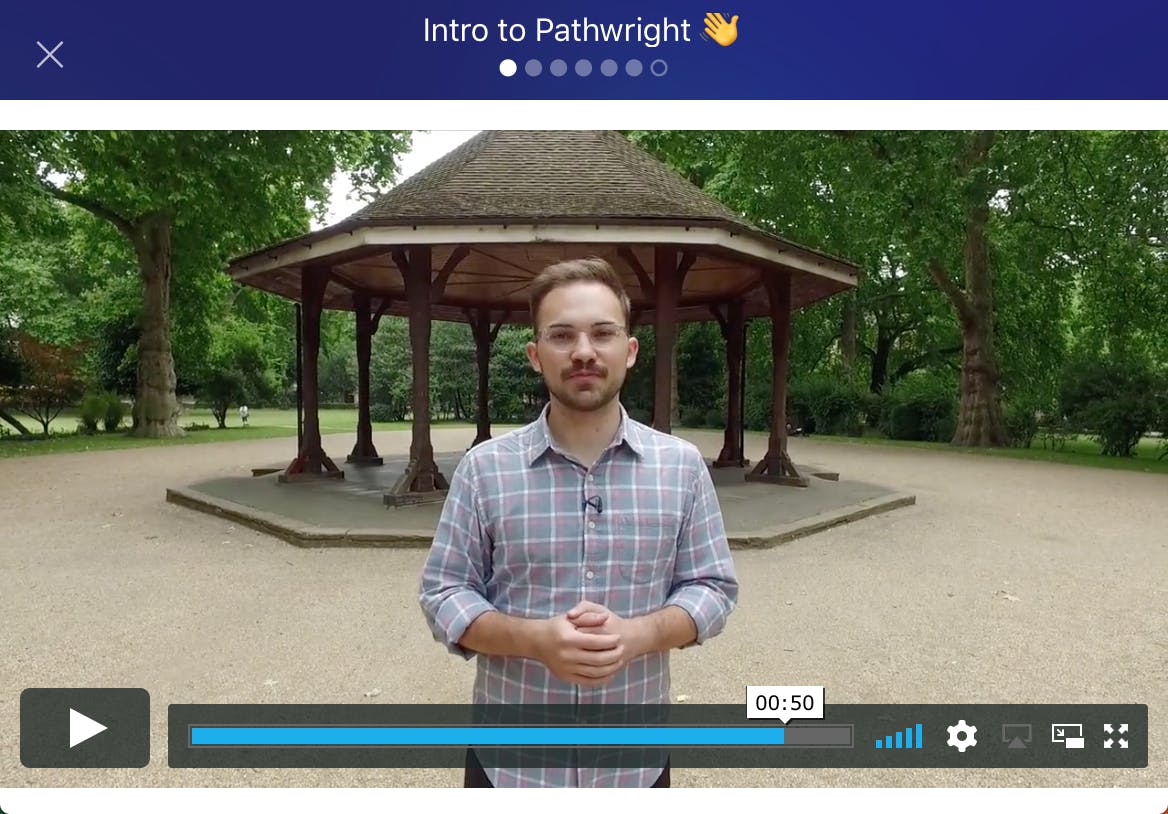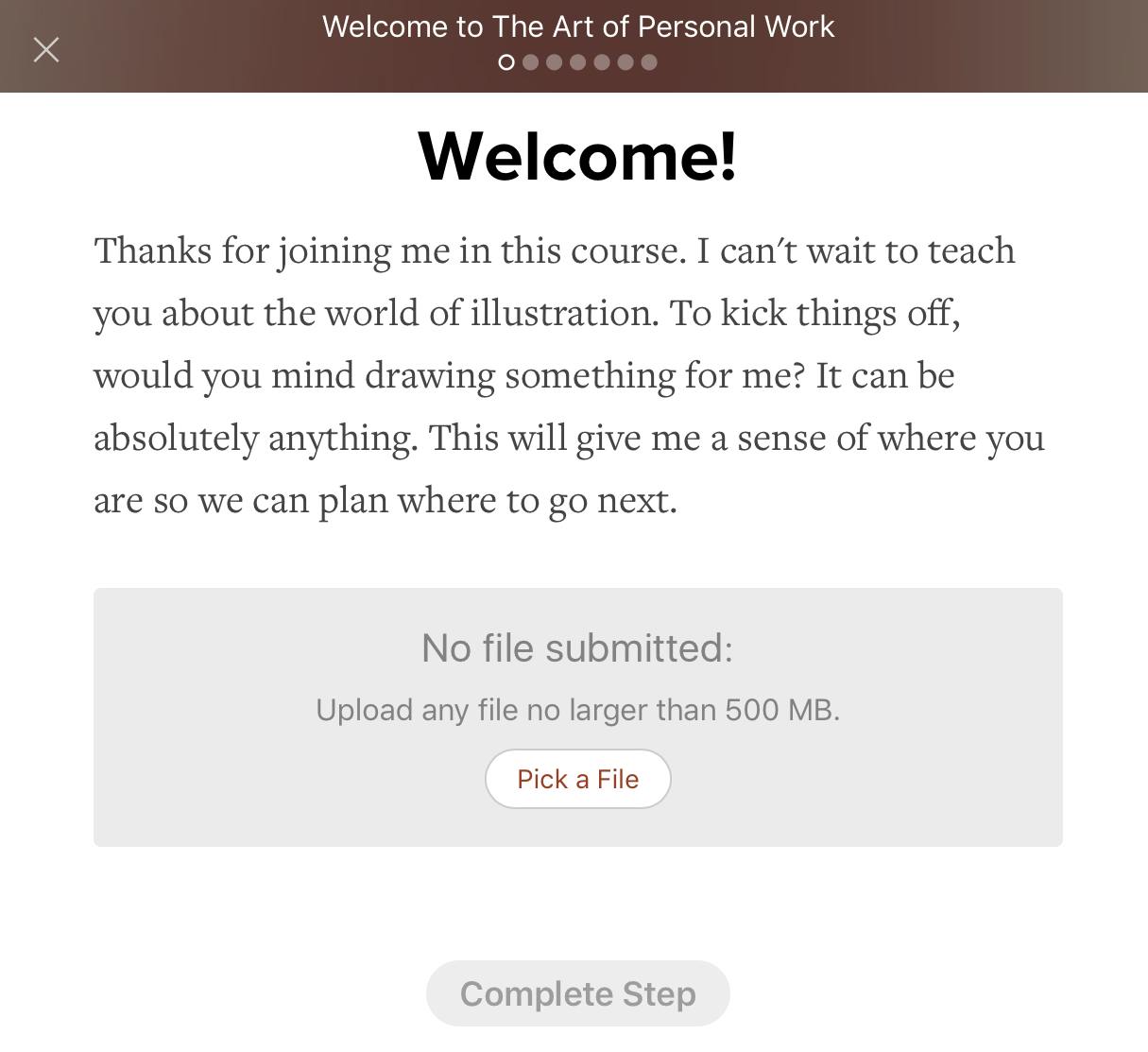
Like the first page of a novel, your course introduction sets the tone for everything that follows. In a course, the first few steps can give your learners a map of what they’ll learn and the energy to tackle it. Let’s take a look at four ways to introduce a course.
Give a personal “hello”
A personal greeting gives your course a friendly feel. This does a lot for engagement, especially when you’re teaching at a distance. Writing works ok for this, but short videos (under a minute) work best. Don’t fuss with fancy equipment. Use a smartphone, simple tripod, and easy-to-use mic. We did this for Intro to Pathwright.

Keep the script simple. Introduce yourself, tell your learners what they’ll cover and why it matters, and tell them you’ll be there for any questions along the way.
Dive right in with a project
If you’re teaching more experienced learners, use the intro to get to know their skill level. For instance, if you teach a class on illustration, you could start with a simple project.

Not only will they take an active hand right away, you’ll get the chance to set more specific goals for their progress.
Break the ice with a discussion
Discussions get learners involved with you and each other. Try the simple, effective method of asking your learners to introduce themselves or dig a little deeper. For instance, if Malcolm Gladwell were teaching on spending in education, he might ask learners something like this:

This question encourages participation out of the gate. Right at the start, learners invest with you in discovering something new. The question also stirs up some healthy controversy (and the energy that comes with it) that you can channel through the rest of your course.
Inspire through a story
This is a favorite of mine. A story engages your learners’ imagination in a powerful way. If I were teaching a course on one of my favorite poets, Osip Mandelstam, I’d open with a story about how his wife and friends saved his life’s work from destruction.

This short anecdote sets the stage for all the drama and intrigue inherent in Mandelstam’s work. Hopefully, it would inspire my learners to see how meaningful and important Mandelstam’s work really is.
The best introductions will combine a few of these tactics. Regardless of which you choose, the most essential thing is to communicate your passion for the material and to give a map for your learners to follow. This combo will set the pace for your learners and give them fuel for the journey.
Using Pathwright is dead simple and doesn’t cost a thing until you’re ready to launch a path.
Get startedTopics in this article
learning experience design
active learning strategies
interactive online learning
create online courses
instructional design

